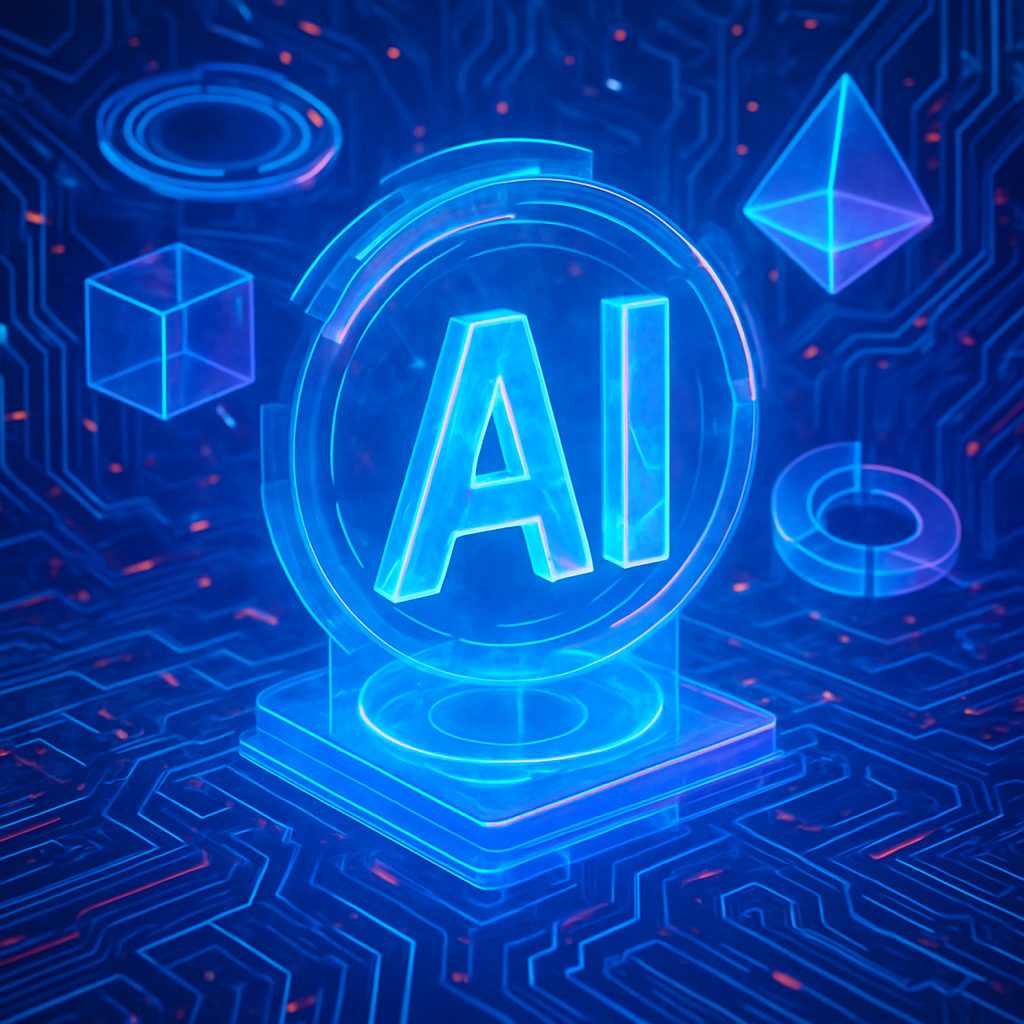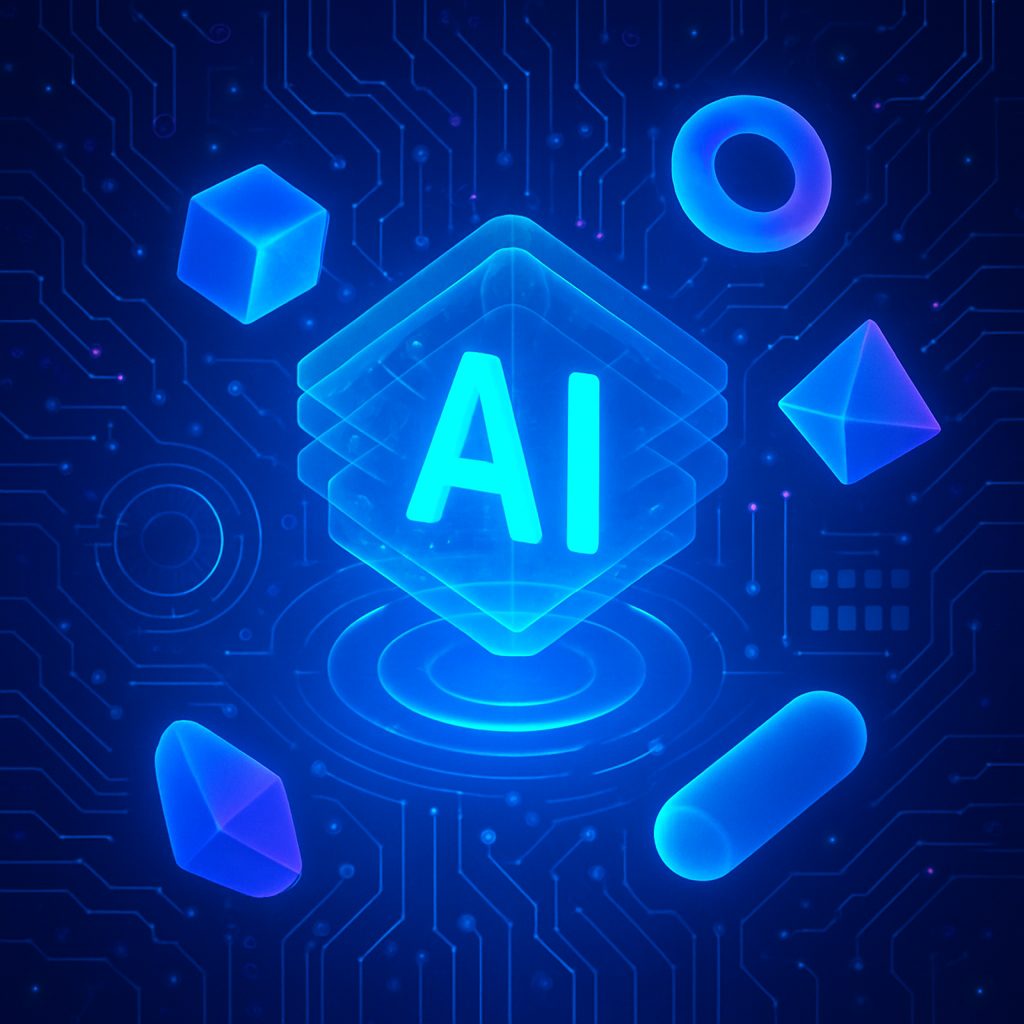Å skape fremragende programvare
La oss bygge noe ekstraordinært sammen.
Stol på Lasting Dynamics for enestående programvarekvalitet.
Luis Lambert
okt 17, 2025 • 10 min read

Artificial intelligence (AI) is no longer a futuristic concept, it’s a present-day necessity for businesses, developers, and innovators across all industries. In 2025, knowing how to build an AI is not just a competitive advantage, but a fundamental skill for anyone looking to stay relevant in the digital economy. Whether your goal is to design a custom AI model, integrate machine learning into existing systems, or create a SaaS product powered by intelligent automation, understanding the foundations of AI development is essential.
The rapid adoption of AI is transforming sectors like healthcare, finance, retail, and education, creating new possibilities for automation, decision-making, and personalized user experiences. But building an AI involves more than coding, it requires defining clear objectives, gathering quality datasets, selecting the right algorithms, and ensuring that ethical standards are maintained. Along the way, you’ll encounter both technical and strategic challenges, from handling biases in training data to ensuring scalability and security.
Today we will explore step by step through the process of building an AI system, covering everything from the initial planning stages to deployment and optimization. With the right approach, you’ll not only learn how to create functional AI models but also how to align them with real-world needs.
Let’s dive into how to build an AI that doesn’t just work, but makes a meaningful impact in today’s fast-moving digital transformation landscape.

Building an AI is a structured journey that transforms a business problem into a deployable, intelligent solution. The AI development lifecycle is iterative, involving several interconnected stages that ensure your AI system is robust, scalable, and ethical. Each phase, from problem definition to monitoring and maintenance, plays a vital role in the success of your AI project.
The first step is to clearly define the problem you want your AI to solve. This involves identifying stakeholders, setting measurable KPIs, and ensuring alignment with your business goals. It’s also crucial to consider ethical implications and regulatory requirements from the outset, as these factors will influence your data collection, model design, and deployment strategies
.
Once the problem is defined, the process moves through data collection, preparation, model selection, training, validation, deployment, and ongoing monitoring. Each stage requires careful planning and execution, as mistakes or oversights can lead to unreliable or biased AI systems. By following a structured lifecycle, you can systematically address challenges and build AI solutions that deliver real-world value.
Before you start building an AI, it’s essential to define clear objectives and use cases. Ask yourself: What problem am I trying to solve? How will AI add value for my users or business? By articulating your goals, you ensure that your project remains focused and relevant throughout the development process 🤔
Use cases for AI are diverse, ranging from automating customer support with chatbots to powering recommendation engines in eCommerce. In 2025 and the upcoming 2026, domain-specific AI solutions are gaining traction, as they deliver higher accuracy and better user experiences by leveraging industry-specific data and KPIs. Whether you’re building an AI model for healthcare diagnostics, financial forecasting, or web app personalization, clarity in your objectives will guide your technical decisions.
It’s also important to consider the broader impact of your AI project. Will it require integration with existing business systems? Are there regulatory or ethical considerations unique to your industry? By addressing these questions early, you can design an AI solution that is not only technically sound but also practical and responsible.
Data is the lifeblood of any AI system. High-quality, relevant, and well-labeled data is essential for training models that deliver accurate and reliable results. The data collection phase involves gathering structured data (like databases and spreadsheets) as well as unstructured data (such as text, images, and audio) from various sources.
However, data quality and availability remain significant challenges in AI development. Many organizations struggle with incomplete, noisy, or biased datasets, which can undermine the performance and fairness of their AI models. Data labeling is often time-consuming and expensive, and privacy regulations like GDPR add further complexity by restricting data usage and sharing.
To address these challenges, invest in robust data governance practices.
This includes cleaning and preprocessing your data, ensuring diversity to minimize bias, and implementing privacy-preserving techniques such as anonymization or federated learning. By prioritizing data quality and privacy, you lay a strong foundation for building trustworthy AI systems.
Selecting the appropriate tools, frameworks, and libraries is a critical step in building an AI. The right technology stack can accelerate development, standardize workflows, and optimize performance. In 2025-2026, popular frameworks like TensorFlow and PyTorch dominate the landscape, offering extensive support for deep learning, distributed training, and hardware acceleration.
For traditional machine learning tasks, libraries such as Scikit-learn, XGBoost, and LightGBM are widely used for their simplicity and high performance. In the realm of natural language processing and large language models, Hugging Face Transformers, LangChain, and LlamaIndex provide powerful tools for building chatbots, search engines, and data integration solutions.
When choosing your tech stack, consider factors such as community support, ease of use, scalability, and compatibility with your existing systems. Open-source frameworks offer flexibility and transparency, while proprietary solutions may provide advanced features and dedicated support. By aligning your tool selection with your project’s needs, you can streamline development and reduce technical debt.
With your data and tools in place, the next step is to build and train your AI model. This involves selecting the appropriate algorithm, such as decision trees, neural networks, or ensemble methods, based on your use case and data characteristics. Model training is an iterative process, requiring experimentation with different architectures, hyperparameters, and training strategies.
During training, it’s crucial to split your data into training, validation, and testing sets. This allows you to evaluate your model’s performance and avoid overfitting, where the model performs well on training data but fails to generalize to new, unseen scenarios. Techniques like cross-validation, regularization, and data augmentation can further improve robustness and accuracy.
Model evaluation goes beyond accuracy metrics. Consider factors such as fairness, explainability, and resilience to adversarial inputs. In 2025-2026, there is a growing emphasis on building models that are not only performant but also transparent and trustworthy. By adopting a rigorous, data-driven approach to model development, you can create AI systems that deliver consistent value in real-world applications.

Despite the promise of AI, developers and organizations face numerous challenges throughout the development lifecycle. Data quality and availability are persistent pain points, as poor data can lead to unreliable or biased models. Algorithmic bias and fairness are also major concerns, especially in sensitive domains like healthcare and finance, where biased AI can perpetuate social inequalities.
Transparency and explainability are increasingly demanded by stakeholders and regulators. Many AI models, particularly deep learning systems, operate as “black boxes,” making it difficult to interpret their decision-making processes. This lack of transparency can erode user trust and hinder adoption, especially in regulated industries.
Integration complexity is another significant hurdle. Embedding AI solutions into existing business processes and IT infrastructure often requires overcoming data silos, legacy systems, and change management challenges. By acknowledging and proactively addressing these pain points, you can design AI solutions that are not only innovative but also practical and sustainable.
La oss bygge noe ekstraordinært sammen.
Stol på Lasting Dynamics for enestående programvarekvalitet.
To build AI tools and applications that are robust, ethical, and user-friendly, it’s essential to follow industry best practices. Start by defining clear objectives and use cases, ensuring that your AI solution addresses real-world problems and delivers tangible value. Choose frameworks and platforms that are well-supported, scalable, and appropriate for your needs.
Prioritize data quality and privacy by implementing rigorous data governance, cleaning, and anonymization processes. Design your AI tools for accessibility and inclusivity, ensuring that they are usable by people with diverse backgrounds and abilities. Transparency and explainability should be built into your application, with clear disclosures about how AI is used and what its limitations are.
Iterative development and user feedback are key to success. Release early versions to a subset of users, gather feedback, and refine your tool accordingly. Robust testing, both technical and user-focused, ensures that your AI application is accurate, reliable, and user-friendly. By adhering to these best practices, you can build AI solutions that are impactful and widely adopted.
The landscape of AI development is evolving rapidly, with several key trends shaping how organizations build and deploy intelligent systems. Autonomous AI agents and multi-agent systems are becoming mainstream, enabling more sophisticated workflows and collaboration between specialized agents. Domain-specific AI solutions are replacing generic models, delivering higher accuracy and better user experiences in industries like healthcare, finance, and eCommerce.
Voice-first and conversational AI interfaces are gaining popularity, driven by advances in natural language processing and real-time speech synthesis. Memory-enabled and context-aware agents are providing personalized, long-term user experiences, while embedded AI in SaaS platforms is blurring the line between product and support.
No-code and low-code AI development platforms are democratizing access to AI, allowing non-experts to build, train, and deploy models using intuitive interfaces. There is also a strong emphasis on data quality, diversity, and governance, as organizations recognize the importance of reliable, unbiased, and compliant AI systems. By staying abreast of these trends, you can position your AI projects for success in a rapidly changing landscape.
Deployment is the stage where your AI model transitions from development to real-world use. This involves integrating the model into your business processes, ensuring compatibility with existing systems, and setting up monitoring tools to track performance. Seamless integration is critical for maximizing the impact of your AI solution and minimizing disruption to your operations.
Once deployed, continuous monitoring and maintenance are essential to ensure that your AI system remains accurate, reliable, and aligned with business goals. Model drift, where the model’s performance degrades over time due to changes in data or environment, requires regular retraining and validation. Implementing automated monitoring and alerting systems can help you detect issues early and take corrective action.
Security and privacy are ongoing concerns in AI deployment. Protect sensitive data, guard against adversarial attacks, and comply with evolving regulations to maintain user trust and avoid legal pitfalls. By adopting a proactive approach to monitoring and maintenance, you can sustain the value of your AI solution over the long term.
Ethical and regulatory considerations are at the forefront of AI development in 2025. As AI systems become more pervasive, organizations must navigate a complex landscape of laws, guidelines, and societal expectations. Issues such as algorithmic bias, transparency, and accountability are not just technical challenges, they are ethical imperatives that require multidisciplinary solutions.
Security and privacy risks are also significant. AI systems are vulnerable to data breaches, adversarial attacks, and misuse. Protecting sensitive data during model training and inference, implementing robust access controls, and regularly auditing your AI systems are essential steps to mitigate these risks. Compliance with regulations like GDPR and CCPA is non-negotiable, as violations can result in severe penalties and reputational damage.
To address these challenges, adopt a holistic approach that combines technical safeguards with ethical frameworks and transparent governance. Engage diverse stakeholders in the development process, conduct regular audits for bias and fairness, and provide clear documentation of your AI systems’ capabilities and limitations. By prioritizing ethics, security, and compliance, you can build AI solutions that are trusted and sustainable.

At Lasting Dynamics we’ve seen how artificial intelligence can transform operations and deliver measurable value across diverse sectors. We work with clients in renewable energy, healthcare, og financial services, among others, for example, we developed an AI for Yoozen that detects defects in solar panels and improves quality control, and partnered with Diagnostiske biochips to accelerate and enhance biomedical data analysis. These projects illustrate how well-designed AI solutions can be adapted to specific needs and produce real impact.
Our approach is repeatable and user-centered. We begin by clarifying business objectives and constraints, defining success metrics, and mapping available data sources. From there we choose appropriate model architectures and frameworks, design training and validation pipelines, and put in place data governance and privacy practices to reduce regulatory and bias risks. Close collaboration with stakeholders throughout the lifecycle, from prototype to production, ensures the solution addresses real problems and is adopted by operational teams.
The outcomes are typically measurable: increased operational efficiency, fewer manual errors, faster decision-making, and improved product or service quality, for example, higher uptime and energy yield through early detection of solar-panel faults, or faster, more reliable diagnostic insights in biomedical workflows. At Lasting Dynamics we apply a strategic, ethical approach so AI delivers sustainable benefits aligned with each client’s goals.
The future of AI is bright, but it comes with both opportunities and challenges. As AI systems become more autonomous, context-aware, and integrated into everyday workflows, the potential for innovation is immense. However, issues such as data privacy, algorithmic bias, and regulatory compliance will continue to demand attention and resources.
Emerging technologies like edge AI, retrieval-augmented generation, and human-AI collaboration are opening new frontiers in real-time, adaptive, and personalized applications. The democratization of AI through no-code and low-code platforms is empowering a broader range of users to build and deploy intelligent solutions.
By embracing both the opportunities and challenges of AI, you can build solutions that are not only innovative but also responsible and sustainable.
Ready to build your own AI and transform your business? 👉 Kontakt Lasting Dynamics today for a personalized consultation and discover how our expert team can help you design, develop, and deploy AI solutions that drive real results. Don’t wait to unlock the power of AI for your organization now!
Fra idé til lansering lager vi skalerbar programvare som er skreddersydd til dine forretningsbehov.
Samarbeid med oss for å akselerere veksten din.
The first steps include defining your problem, gathering and preparing relevant data, and selecting the right AI approach. Preprocessing your data and choosing a suitable algorithm are essential for building a solid foundation.
Python is the most popular language, with frameworks like TensorFlow, PyTorch, Keras, and Scikit-learn widely used for building and deploying AI models.
Use diverse datasets, regularly audit your models for bias, and implement transparent decision-making processes. Follow established guidelines for responsible AI use.
Yes, no-code and low-code platforms now allow users to build basic AI models using visual interfaces, though advanced solutions still require programming knowledge.
Development timelines vary widely, from a few weeks for simple projects to several months or years for complex systems, depending on data quality, complexity, and resources.
Forvandle dristige ideer til kraftfulle applikasjoner.
La oss skape programvare som gjør en forskjell sammen.
Luis Lambert
Jeg er multimediedesigner, tekstforfatter og markedsføringsekspert. Jeg søker aktivt etter nye utfordringer for å utfordre ferdighetene mine og vokse profesjonelt.